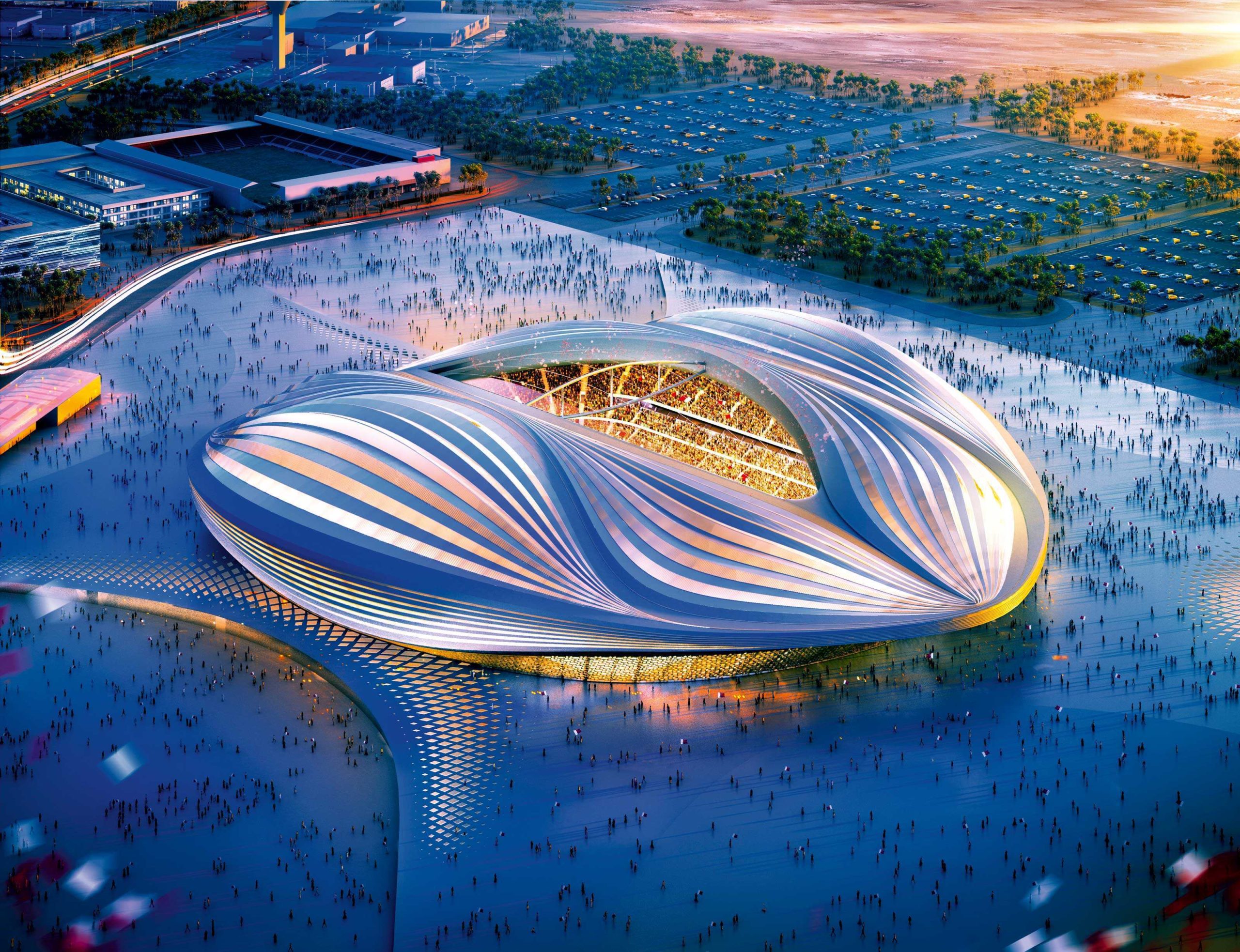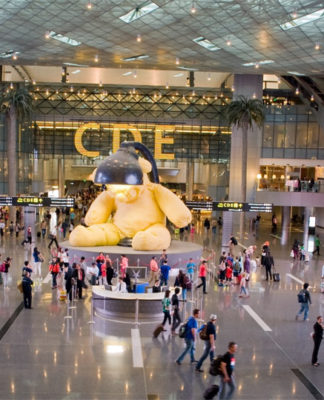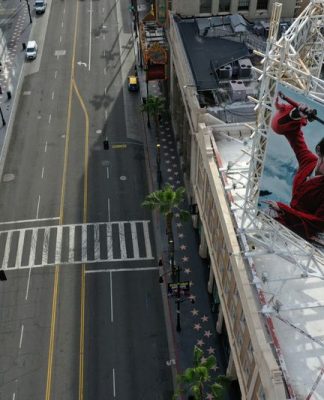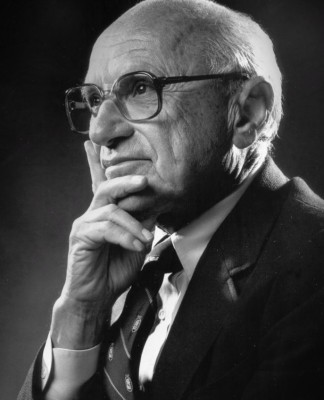Zaha Hadid – Biography and Legacy
IRAQI-BRITISH ARCHITECT AND PAINTER
Biography of Zaha Hadid
Childhood
Zaha Hadid was born in Baghdad, Iraq during a period of prosperity in which the government chose to invest in modernizing the city’s architecture. Her childhood saw the completion of buildings by such iconic architects as Frank Lloyd Wright and Le Corbusier. Hadid’s father Muhammad al-Hajj Husayn Hadid, was a wealthy industrialist and politician, who contributed to this progressive government impetus. Her mother Wajiha al-Sabunji was an artist.
On account of the influence of her high-achieving family, Hadid said, “there was never a question that I would be a professional.” One of her two older brothers Foulath Hadid claimed she could have become the first Iraqi astronaut had she wanted to. However, by the age of eleven, Zaha Hadid decided that her future lay in architecture. Her parents supported her ambitions and encouraged her to design some of the interiors in their home.
Hadid’s family traveled frequently throughout her childhood, and she received a multi-cultural, international education. This was both formal, at boarding schools in England and Switzerland, and informal with her family. She recalled the impact of traveling with her father: ” [He] made sure I went to every important building and museum in each city we visited. We’d go to new cities to learn about architecture … I think that’s what inspired my love of buildings.”
Later, during her university years, Hadid developed a close relationship with her young nieces and nephews. She looked after them in the wake of their parents’ divorce and taught them how to draw. Her niece Rana later recalled, “You could talk to [Zaha] about anything: architecture, the latest nail polish, your love life.” However, Hadid, like her siblings, often expressed her love through outspoken criticism. She applied the same high standards to others as to herself and pushed those she loved to achieve more.
Education and Early Training
Hadid attended the American University in Beirut, Lebanon where she earned a bachelor’s degree in mathematics. In 1972, she moved to continue her studies at the Architectural Association in London, which was a center of progressive architectural thought at that time. There, she studied under Rem Koolhaas, Elia Zenghelis, and Bernard Tschumi, who all recognized her talent. Zengehlis praised her “spectacular vision” and her ability to see the bigger picture ahead of the smaller details in her designs.
In her fourth year at university, Hadid designed a hotel for the Hungerford Bridge on the River Thames in London, known as the Malevich Tektonik. Kazimir Malevich’s Suprematist paintings of geometric forms inspired the radical project that revealed Hadid’s fearless way of challenging the status quo. According to her, “It was very anti-design. It was almost a movement of anti-architecture.” Even after she became an established and award-winning architect, critics continued to recall the ingenuity and influence of this early design.
Hadid graduated in 1977 with a Diploma Prize. At the ceremony, Koolhaas described the architect as “a planet in her own orbit.” She soon after became a partner at the Office for Metropolitan Architecture (OMA) in the Netherlands, a firm founded by Koolhaas and Zenghelis. Having worked on well-known and controversial projects such as the un-built Dutch Parliament building in the Hague (1978), she left to form her own London-based firm, Zaha Hadid Architects (ZHA), in 1980.
Throughout her professional practice, Hadid continued to paint, using abstraction as a tool to develop new designs. She explained, “I found the traditional system of architectural drawing to be limiting and was searching for a new means of representation.” Through abstraction, she challenged the conception of a building as a solid mass and adventurously explored the spatial relationships between building elements. These principles informed her 1982 competition-winning proposal for The Peak, a mountainside leisure center in Hong Kong. The project marked her debut into the limelight as a formidable architect (despite it never being built), and she became known for her creative and ambitious ideas.
Mature Period
In the absence of built work, Hadid established her reputation through her drawings, paintings, and by teaching architecture internationally at schools including the Architectural Association, Harvard Graduate School of Design, Cambridge University, and Columbia University. She also dabbled in furniture, interior, and set design. Most significantly, her artwork was featured in the 1988 exhibition “Deconstructivism in Architecture,” curated by Philip Johnson and Mark Wigley at New York’s Museum of Modern Art.
While her works were significantly admired, they were deemed too radical for construction. One notable example of this was her 1994 competition-winning design for an opera house in Cardiff, Wales. In spite of her achievement, a more conservative design was taken forward for cost reasons. The rejection took its toll on Hadid, to the extent that she considered leaving the profession. She struggled to understand the client’s unwillingness to take on the ambitious design, insisting her project “could easily be done.”

It was through these art exhibitions that Hadid met Patrik Schumacher, who would later become her business partner. An architecture student at the time, Schumacher later said, “I was intrigued by the frankness and openness of her presentation.” Although Hadid herself never identified as a Deconstructivist, she retained an interest in its sculptural architecture made up of interconnecting spaces, characterized by dramatic angles, throughout the next decades. Her former tutor Zenghelis commented, “We called her the inventor of the 89 degrees. Nothing was ever at 90 degrees. She had spectacular vision. All the buildings were exploding into tiny little pieces.”
Without compromising this bold style, in the 1990s Hadid began to transform her reputation as a “paper architect” to a building architect. Her first successfully realized project was the Vitra Fire Station in Weil am Rhein, Germany (1989-92). This was followed by more work in Europe, including a housing project in Berlin, exhibition spaces in London’s Millennium Dome (1999), and for Weil am Rhein’s horticultural festival (1997-99). The architect later referred to this formative period as “… the years when I didn’t sleep for four nights in a row, or weeks … It was a very exciting time.”
The construction of two further projects in the late 1990s confirmed to her colleagues and clients that Hadid’s designs were feasible, notwithstanding their ambition. These were the Rosenthal Center for Contemporary Art in Cincinnati, Ohio and the Bergisel Ski-Jump on Bergisel Mountain in Innsbruck, Austria. The New York Times called the former the “most important American building to be completed since the Cold War.” It was not only Hadid’s first American project, but also the first American museum designed by a woman.
A year after the completion of the art museum, Hadid was awarded the Pritzker Prize, widely considered to be the most prestigious architectural award. The president of the foundation, Thomas Pritzker, noted, “Although her body of work is relatively small, she has achieved great acclaim and her energy and ideas show even greater promise for the future.” As the first woman to receive the prize, Hadid began to attract more media attention as well as higher profile clients with greater ambition and more substantial budgets.
Late Period

Having received recognition for her work, Hadid used her high profile to push even more ambitious designs. The first of these in a new style was the Phaeno Science Center in Wolfsburg, Germany (2005), which, by eschewing horizontals and verticals, gave rise to the development of new digital techniques to structurally engineer the building and compute its form. Hadid became a pioneer of this approach, which was termed Parametricism.
According to Schumacher, Parametricism “succeeds modernism as a new long wave of systematic innovation.” It prompted a stylistic shift in Hadid’s work, away from the jagged Deconstructivism for which she was previously known. The MAXXI museum of 2010, which was awarded the Stirling Prize, is one of her last works in the former style, while her design for the Heydar Aliyev Center in Baku, Azerbaijan in 2012 is characterized by the sweeping, curving forms of Parametricism.
Other critically acclaimed projects in this period include the Guangzhou Opera House of 2010 (inspired, according to The Guardian, by Hadid’s unrealized designs for the Cardiff Bay Opera House of 1994), The Riverside Museum in Glasgow (2011), and the London Aquatics Centre (2011). The projects in Britain were her first to be built there, in spite of Hadid having become a British citizen and basing her practice in London. For this, she credits a new open-minded approach to architecture, noting, “Something has changed radically here [in Britain] recently. There is no resistance to the new any more.”
For all those who praised Hadid’s new architecture, other critics ridiculed the expense and scale of such projects. In many cases, Hadid was urged to scale back or abandon projects due to the constraints of sites or budgets. The London Aquatics Centre is a scaled-back design and a New National Stadium for the 2020 Olympics in Tokyo was discarded due to cost concerns. Her firm attracted particular criticism in 2014 after Hadid responded to reports of poor working conditions on construction sites in Qatar (where her Al Wakrah Stadium for the 2022 World Cup would be built) with the claim that ensuring safe working conditions was not her responsibility as an architect.
Death

In 2016, Hadid died suddenly from a heart attack while being treated for bronchitis. She had decided not to have a family of her own and was entirely dedicated to her career. Speaking of her single-mindedness, she said that, “If [architecture] doesn’t kill you, then you’re no good … you have to go at it full time. You can’t afford to dip in and out.” Some, such as the journalist Harry Mount, have described her professional devotion as “narcissistic.” He wrote, “Her flat was empty, except for objects she’d designed herself: a curved sofa, a swooping table, and a futuristic tea set. There was little sign of pleasurable human occupation: no books, no CDs.” Others argue that in dedicating herself to her work, Hadid challenged stereotypes of Muslim women and encouraged those who wished to, to do the same.
In response to being asked by journalist Simon Hattenstone in 2010 if she was happy being single, Hadid responded, “I don’t think about it in this way. Things happen in life.” Perhaps the closest Hadid got to a serious relationship was with her long-term design partner Schumacher. Their relationship has been characterized as close but “tricky.” For example, Hadid’s friend, the architect Peter Cook said, “[Hadid] was never really [one] to criticize Patrik, but she knew some of the things he was doing were not to her taste. But she was sort of semi in love with him and allowed him to do it.” Nevertheless, any claims of a romantic relationship between them (including a rumor that they married in 2005) have been refuted.
Schumacher was the only non-family beneficiary of Hadid’s will, which she entrusted to him, her niece Rana, and her good friends, the artist Brian Clarke and Conservative peer (and former chairman of the Serpentine Gallery) Lord Palumbo, to carry out. However, the relationship between the four has deteriorated since Schumacher’s comments in 2016 advocating abolishing social housing and building over London’s Hyde Park. In 2018, Schumacher launched a bid to take sole control of Hadid’s estate. He has led Zaha Hadid Architects since the architect’s death, on which she left behind 36 unfinished projects in 21 countries.
At the time of her death, Hadid was also in the midst of discussions with curator Hans Ulrich Obrist about an exhibition of her paintings. Having shown him her personal sketchbooks a year earlier, the curator recalled, “They were almost like doodles, but all her buildings seemed to come from the flow of these free sketches … was very personal. She kept them in her bedroom. I was amazed and wanted to see more.” The show took place in 2017 at the Serpentine Gallery, entitled Zaha Hadid: There Should Be No End to Experimentation. “She wasn’t just a great architect, she was a great artist,” according to Obrist.
The Legacy of Zaha Hadid
Hadid has been described by The Guardian as the “Queen of the curve,” who “liberated architectural geometry, giving it a whole new expressive identity.” Although she did not identify as part of a particular school, the terms Deconstructivist, Parametricist, and Abstractionist have variously been used to describe her work. Pritzker Prize jury chairman, Lord Rothschild, described her as, “unswerving in her commitment to Modernism. Always inventive, she’s moved away from existing typology, from high tech, and has shifted the geometry of buildings.” Likely influenced by her parents’ progressive outlook, Hadid has, since her student days, “believed in progress and in creativity’s role in progress” and has challenged traditionalism.
Upon her death in 2016, Hadid’s studio reported, “Zaha Hadid was widely regarded to be the greatest female architect in the world today,” begging the question of the relevance of her gender to her achievements. Hadid resisted typecasting as a female architect or an Iraqi architect for her own advancement, but was keen to reassure others that “they can break through the glass ceiling.” Her commitment to encouraging younger professionals also came across in her teaching career. Once named among the world’s highest paid architects, as well as an investor in property, restaurants, cosmetics, and fashion, many admired Hadid for her business acumen as well as her architectural ability.
Hadid’s gender has undoubtedly colored the reporting of her work and personality by critics. Some, such as Mickey O’Connor, have perceived her confidence as “confrontational,” and she is often dubbed a diva, a label she rejected as sexist. Others, like Mark Irving, pointed to her as a force to be reckoned with: “She cuts a dramatic, voluptuous figure in her black outfits … above which large heavily lidded eyes and purple-painted lips that always seem to be set in a slightly unsatisfied pout, turn on you like the guns of a well-armored battleship.”
Yet in Hadid’s own accounts, she admitted to often feeling ostracized. This was the case particularly during the events of 1994 in which her competition-winning design for the Cardiff Bay Opera House was subsequently rejected. “People were patronizing towards me all the time. They didn’t know how to behave with me. I don’t know whether people responded to me in a strange way because they just thought I was one of those eccentric people, or they thought I was a foreigner or behaved funny or I’m a woman.” On other occasions, Hadid has referred to herself as “flamboyant” and “eccentric…but I am not a nutcase.”
Notwithstanding her feelings of exclusion from particular networking circles, the architect had high profile friends in, for example, Frank Gehry and Norman Foster. At her death, Foster noted “I became very close to her as a friend and colleague in parallel with my deep respect for her as an architect … she was one of the very few architects as friends who was invited to my 80th birthday party … she was my dear friend.”
Michael Kimmelman of The New York Times adds that although “her soaring structures left a mark on skylines and imaginations,” Hadid “embodied … the era of so-called starchitects who roamed the planet in pursuit of their own creative genius.” In line with the typical connotations of “starchitecture,” or “star architecture,” she has been criticized for the extravagance and celebrity of her designs. Critic Robert Booth has further suggested that favoritism and marketing value are the reason for her having won so many design competitions, rather than architectural talent.
Today, the Zaha Hadid Architects firm remains to carry out her legacy to create transformative spaces.






























